Let’s think about the concept of interesting. What does it mean for something to be interesting? What things are interesting and what things are not? I have been in situations where air is the most interesting thing in the whole universe, for example, when pinned underwater in rough surf. I’ve bicycled out of Death Valley where, despite the awesome scenery, hypothetical potable water somewhere far away was the most interesting thing in the world. In their natural habitats I’ve stumbled upon rattlesnakes, all kinds of bears, a giant manta ray, a lynx, and even a wolverine. I have been actually chewed on by vicious dogs. I’ve been near massive wildfires, in a hurricane, very near tornadoes, in blizzard whiteouts, and through the ice in a frozen lake. All super interesting!
Once you get some breathing room to comfortably exist as a living organism the next thing on the list of interesting things, often to our chagrin, are matters involving reproduction. Stuff like who is hot and who is not, what they are or (especially) are not wearing, do they like people like us, etc. This can be extended and related to a desire to belong, perhaps to a group, social class, ethnic or religious identity, etc.
I would argue that all of these interesting things, physical danger and reproduction based interests, are really opportunistic. If you run over a squirrel in your car, it might be quite interesting at the time but only because it makes you think about your own close call not swerving into something dangerous, or you are reminded of the nature of mortality itself. It is not because squirrels are just fascinating creatures or that any new danger exists anywhere in the world to you or squirrels. There’s no (easy) way to synthesize on demand the interesting and super sad experience of accidentally running over a squirrel.
If we limit ourselves to experiences that we are in complete control over and can choose to do at any time, what are the most interesting possibilities? Let’s also exclude faux danger like skydiving and roller coasters, which, while probably fun, are not interesting in the same way.
For me one of the most interesting places I’ve ever visited was the Sedlec Ossuary in Kutna Hora, Czech Republic. I just happened to be bicycling through town and something caught my attention and I checked it out. It instantly moved to the top of my very long list of interesting things I had seen. I had a similar encounter with extremely interesting while randomly cycling through the quaint Bavarian town of Dachau. Probably the most interesting thing I’ve seen that I deliberately tried to see (it took three attempts) was a spectacular night launch of the Space Shuttle Columbia. That experience is even more interesting now that I know how close that mission was to catastrophic failure.
Some unfortunates might have substance abuse problems or mental health issues pathologically warping what is interesting. Some people might say I qualify for the latter but for me one of the most interesting things I’ve ever heard of is a machine that combines space flight with genocide. Although I’m unlucky enough to be surrounded by ocean or hostile desert in all directions for 1000km, I am only 700km from one of these machines. And visitors are welcome.
A couple of days ago I made my third visit to the Titan Missile Museum near Tucson, Arizona. There you can see with your own eyes an artifact of human achievement that is one of humanity’s most technologically impressive and simultaneously one of humanity’s most horrifying and sinister. They have preserved there a complete hardened underground silo environment containing an actual Titan II intercontinental ballistic missile.

My first visits were just to see this unbelievable thing with my own eyes. To confront and confirm its existence directly, cultivate a deeper understanding about it, and meditate on the morality of its very existence. The more I learned about the topic the more interesting it became. I highly recommend all humans read Command And Control by Eric Schlosser which I have reviewed here. I also highly recommend Alex Wellerstein’s intelligent blog about nuclear weapons history and policy. At the very least, read this fascinating topical piece about how a single human has the ability to annihilate hundreds of millions of others. On a whim.
Mandrake, do you recall what Clemenceau once said? He said "War is too important to be left to the generals." When he said that, fifty years ago, he may have been right. But today war is too important to be left to the politicians. They have neither the time nor inclination for strategic thought.
— From Dr. Strangelove
All of that is really damn interesting to me as a modern human who wants to continue living as one. But as a technologist and an engineer, this spaceship of genocide along with its space port might as well be a nonfictional incarnation of the Star Wars Deathstar. On this visit I signed up for the comprehensive 6 hour tour where the museum’s main historian showed us every bit of the entire complex, explained what every component was for, and expertly answered all questions. Since this was about an order of magnitude more expensive than the regular tour, the only people in our small group of 6 were all very knowledgeable and serious about the topic. We even had a couple of the tour guides from the regular tours come along to learn more about the place.

This tour was absolutely worth the long drive and the price of admission. Here are some highlights of things I learned on this tour.

-
When the rocket was launched, 100,000 gallons of water, the volume of one and a half 25m lap pools, were sprayed into the exhaust plume. This was to absorb not just heat energy from the rocket exhaust but also to absorb sound energy and prevent shock waves created by the supersonic exhaust which could damage the vehicle. To consider this is some advanced engineering. To model it and plan for it properly is even more impressive. To have a plan for dumping swimming pools' worth of water in a matter of seconds is getting really extreme. Just considering how you’d store so much water 100 feet underground so that it could remain intact after a nuclear weapon attack becomes incredible.

-
Reading the aforementioned Command and Control it becomes clear that nuclear missile systems are complicated, technical, and full of danger even when the warhead doesn’t detonate. Fires are carefully planned for; all of the checklists required all fire extinguishers to be checked daily. One interesting fire suppression system that was pointed out was able to fill the entire area with foam very quickly (so we were told). What magic chemistry enabled this? Apparently before 3M invented a synthetic substitute in the 1970s, the foaming agent that was used was ox blood. Yes, the blood of a bovine ox. Seriously. Not only that, but there were blood red streaks down the wall where it had spilled while they were refilling the tank of the stuff.

-
One thing that I found surreal in its ingenuity and execution was how they aimed the missile. This is a "ballistic" missile and that means that it is basically thrown by a rocket like a bullet is thrown by a chemical explosion in a gun. The rocket had a rough mechanism, almost equivalent to clockwork, for doing all the maneuvering that needed to be done. The rocket basically blasted off and needed to fly straight for a certain amount of time until it would do a roll program which would make sure it was pointed for a correct apogee. Then in space, after having spent its stages, the payload (the R/V, reentry vehicle) needed to be on a perfect path to the strike zone. To know if the thing was pointing the correct way as it ascended and to direct hard linked control reactions to the rocket gimbals they used very fancy gyroscopes. These gyroscopes always knew if they had changed orientation, but the subtle question that remains is how did they know what orientation they were at to begin with? For example, if one of the gyros had a horizontal axis which pointed north, how exactly was that known? Did it use an internal compass or something? No, that would not have been nearly accurate enough to throw 3700 kg 10,000 km away and have it land within a few km of the target. What they did was bore a special diagonal shaft from the missile silo to the surface with hardened hatches. On the surface they had a tripod mount. Surveying equipment was periodically set up and sighted on monuments placed out in the desert to establish a very accurate directional bearing. This was then linked to a very fine mirror system that was used with an autocollimator which was permanently mounted in a special room on level 2 of the silo. The missile tube had a strong round glass window that allowed the collimator room to see through to the missile with a direct line of sight. By opening a hatch in the side of the missile, the gyro package could be exposed and a mirror on it could be used to calibrate the exact bearing of the vehicle with respect to surveying references above ground. Some of the first useful software I wrote professionally was to interpret angular measurements taken from an autocollimator into surface straightness and flatness geometry. Having worked with this kind of technology personally, I am quite impressed at the technical solution the engineers came up with to solve this tricky problem.

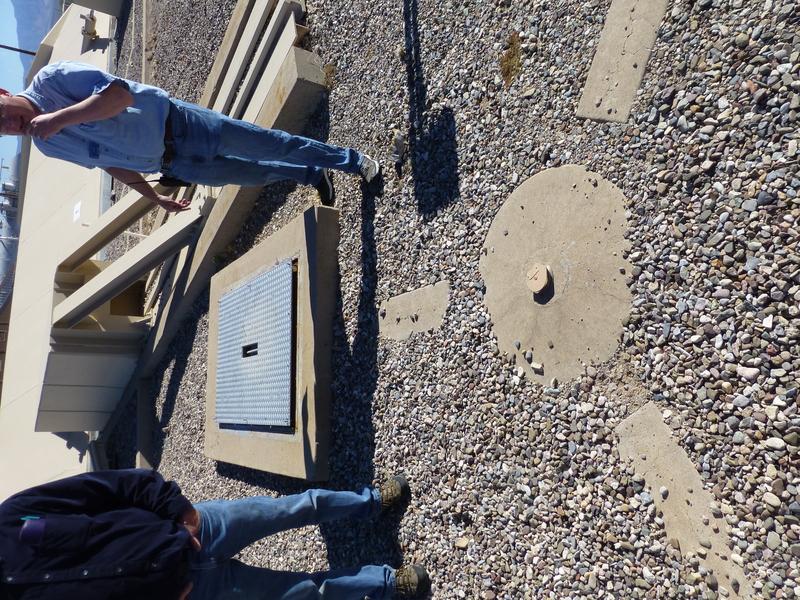
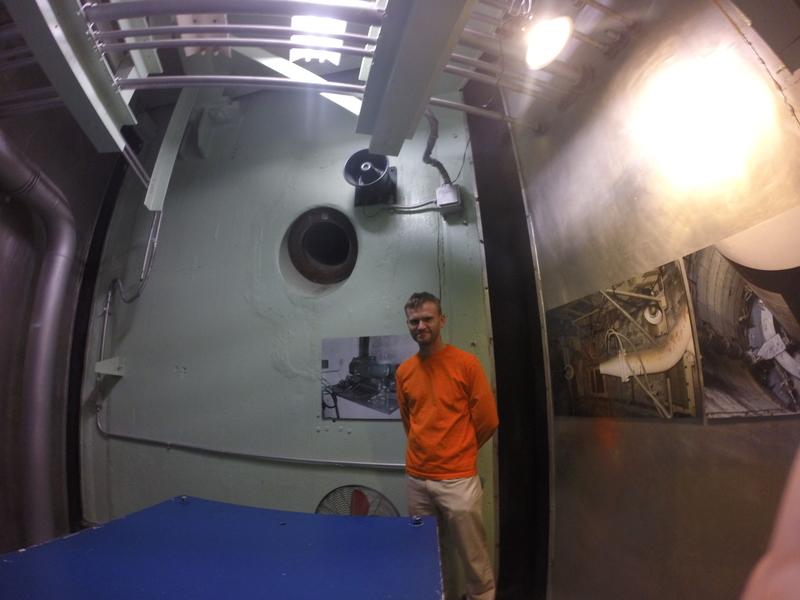
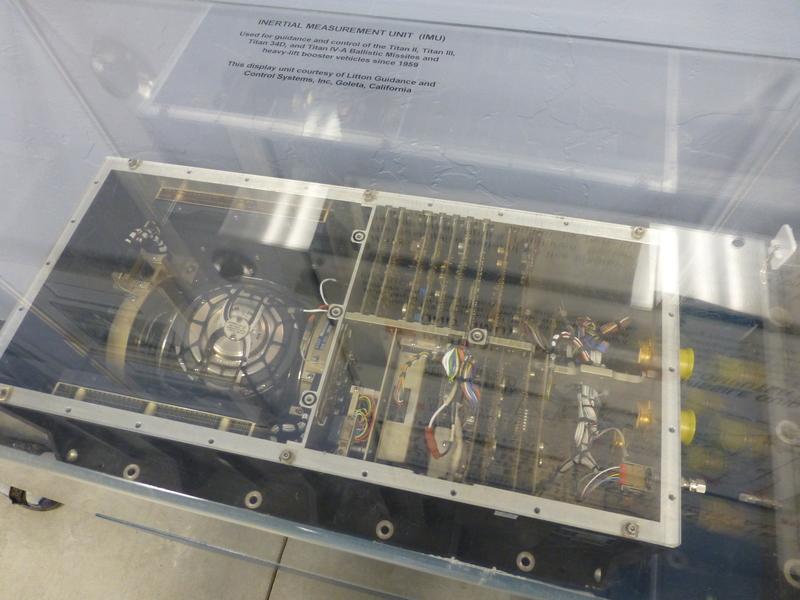
-
Nuclear electromagnetic pulse or EMP describes a phenomenon where a nuclear explosion creates an electromagnetic disturbance that is likely to cause substantial damage to electrical equipment. This is part of tactical planning with nuclear weapons, i.e. the assumption that the enemy will seek to destroy your power grid in this way. For this reason, the entire missile complex needed to be able to be self sufficient with respect to electricity (and everything else). There is a huge diesel generator in the missile silo that is supposed to come on after no more than two minutes. Instead of a high current starter, this generator is started using compressed air which is kept at the ready. If it doesn’t start in a couple of attempts, the site is effectively dead, so it’s mission critical. At first they used to test this thing often, but then they realized it was wearing it out somewhat to test it so much and since the complex had been built around this massive thing, they couldn’t easily recondition or replace it. Eventually they had to back off on tests. Another interesting EMP protection is the main silo door which weighed 800 tons which had to slide 10m in about 15 seconds, again, without electricity. The trick they used there was to set it up with a hydraulic system that would push the door open with rams. The energy came from a large tank of 3500psi nitrogen effectively acting as a spring which could push the pistons.
-
Many rockets and missiles use liquid oxygen (LOX) oxidizer and something like hydrogen, methane, or kerosene as the fuel. The problem with this setup when playing nuclear war is that you really want your bomb up and away as soon as possible and a LOX based system needs to be fueled just before take off or else it will evaporate away during long term storage. The Titan II designers wanted their missile to be ready to fly instantly and this meant it needed to be fully loaded with fuel and oxidizer at all times. The stuff they chose was a bespoke fuel for the Titan II program called Aerozine 50 which was a 50/50 mix by weight of hydrazine and unsymmetrical dimethylhydrazine (UDMH) and an oxidizer of dinitrogen tetroxide. All you need to know about this stuff, both fuel and oxidizer, is that it’s outrageously toxic. Like crazy toxic. What could go wrong, eh? But wait, there’s more. This fuel is hypergolic which means that when these two chemicals are combined, the reaction takes place instantly. So keeping them separated until you’re sure you’re ready to go is critical. But wait there’s more! The fuel boils at 70F. And if it boils things get very bad. So they had to keep the missile between 58F and 62F at all times. To do this they had a hefty air conditioner. And what if that failed? Well, catastrophe. But air conditioners have never failed, right?
-
One interesting thing I learned is that the rocket was supposed to be pretty robust and able to fly rain or shine. However, they did keep track of wind speed with an adorable little toy airplane on a pole and apparently wind speed over 40 knots would make the missile too unreliable to fly. I guess the thinking was that if they had to wait a day or two for the wind to die down to retaliate, well, that’s what they’d do.
-
I used to work with tape readers just like this to program machine tools. I have even personally replaced such units with tape emulators that can be loaded with RS-232. I’d love to know what’s on that mylar tape.
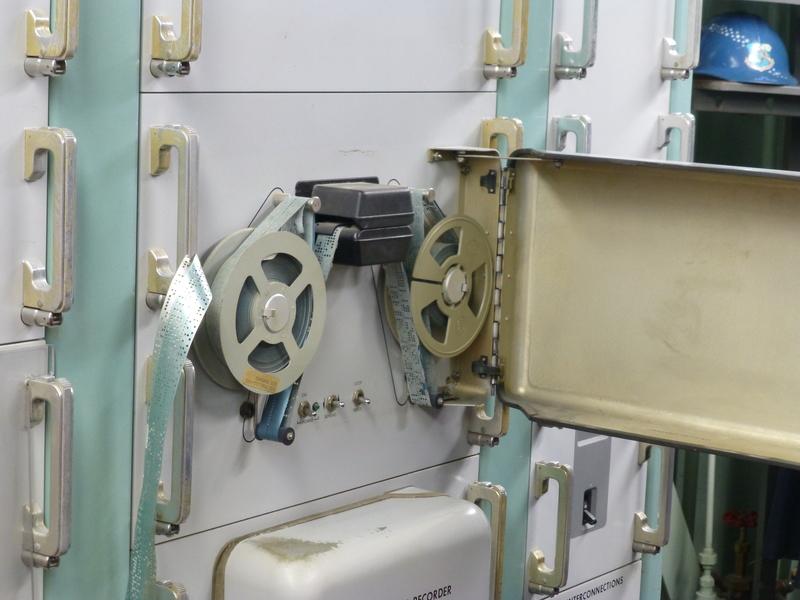
-
The guide was describing the checklist for launch and he pointed to a filing cabinet that contained the launch codes which needed to match the ones radioed in (the complex is bristling with redundant antennae systems). This red filing cabinet, or "EWO safe" as it’s properly known, had two combination locks on it which the guide said each had to be opened by one of the silo commanders. Or, as I pointed out, someone with a hacksaw blade. And although I was being witty, I was also seriously probing the physical security arrangements for this extremely critical information transfer. The guide stunned me by mentioning the "EWO Tool Kit" (Executive War Order) which he said contained bolt cutters, a portable hydraulic pump, and all manner of hand equipment to hot wire the missile in case something went wrong with the correct and proper mechanized procedure. If that doesn’t give you chills, then you probably don’t understand what I’m trying to say.
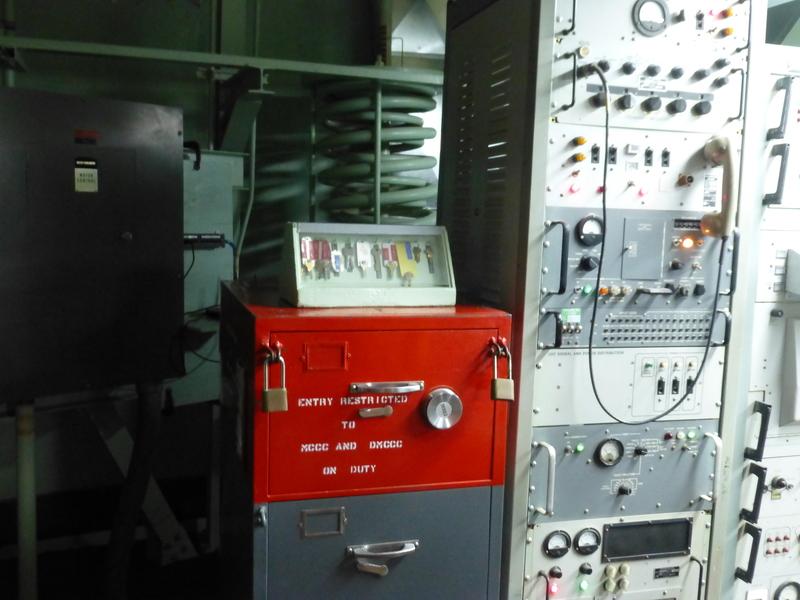
-
The guide pointed out some graffiti deep in the bowels of the complex. Most, he said, were things like "Sgt so-and-so is a dick". But this one he showed us was, for me, really quite poignant. This is an addition problem worked out on the wall.
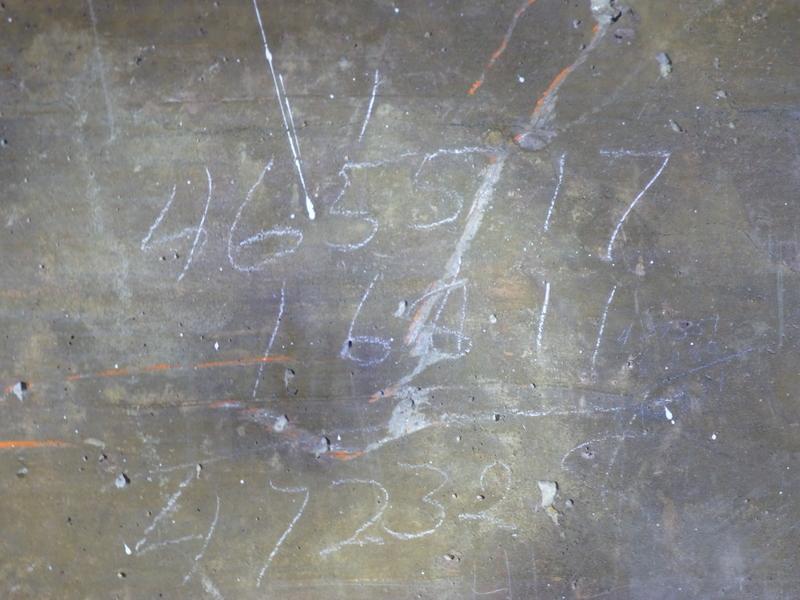
465517
16811
======
472328Of course the problem with this is that it is incorrect. We can all assume that this wasn’t a calculation that affected operational safety but it reminds you, humans are fallible. And when they’re fallible while steering the end of the world as we know it, well, damn that’s something very interesting to reflect on.
I will reiterate that all humans should read Command And Control by Eric Schlosser but if that’s too much for you, definitely look into the PBS documentary of the same name based on the book; apparently it premiers Tuesday January 10, 2017.
Hopefully that gives you a sense of why I am interested in this thing. I just can’t see how it’s not one of the most important topics, well, ever. Just the dramatic history, first class engineering of all sorts, primary science (applied!), and space ships would be interesting as hell. Add all that to the end of the freaking world… well… If you’ve got something more interesting than that in mind, please do share it with me!
The diagram of the silo is taken from the website of the Titan Missile Museum. I’m not hot linking because I want this to stay around and they said they wanted visitors to help publicize the museum.
Because I’m lazy and other reasons I didn’t take any photos but I knew smart people with serious cameras would. The photos featuring me, in the orange shirt, were taken by my son using a questionable but artsy GoPro. The other photos were taken by Andrey Ilatovskiy who not only knows how to deal with copyright minutia, but has in fact done so. All photos: CC BY-NC-SA 4.0